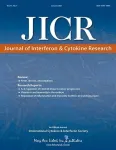(Press-News.org) Delivering a minor electric shock into a stream to reveal any fish lurking nearby may be the gold standard for detecting fish populations, but it's not much fun for the trout.
Scientists at Oregon State University have found that sampling stream water for evidence of the presence of various species using environmental DNA, known as eDNA, can be more accurate than electrofishing, without disrupting the fish.
"It's revolutionizing the way we do fish ecology work," said Brooke Penaluna, a research fish biologist with the U.S. Department of Agriculture Forest Service who also has an appointment in OSU's Department of Fisheries and Wildlife. "You can identify species from a bottle of water using genetic tools. When you go out to the site, I can tell you what's in that stream just based on what's in this bottle of water."
Penaluna is lead author on a study published Wednesday in Ecosphere that compared the efficacy of eDNA sampling and electrofishing in detecting how far upstream coastal cutthroat trout were present in coastal and Cascade streams throughout Washington and Oregon.
Determining how far upstream fish are present is crucial for guiding forest management practices, as streams with fish in them receive more protections than streams without fish. It also helps inform conservation by improving scientists' understanding of specific species' distribution and movements.
Electrofishing has been the standard method for surveying fish distribution in bodies of water since the 1960s. It involves sticking two electrodes into the water and applying direct current, which affects fish swimming nearby and causes them to swim toward one of the electrodes. The person doing the sampling can then scoop up the dazed fish in a net and collect data before returning them to the water, where they resume normal activity within a few minutes.
Research sampling for eDNA has been used for over a decade but is not widely used yet in industry or resource management. It involves collecting water samples on-site and running lab tests to check for the presence of DNA for certain species of fish, which the fish shed regularly through excretion and changes in their skin or mucus.
The OSU study tested the effectiveness of eDNA in finding the "last fish" point, the farthest upstream fish are present. The researchers looked for coastal cutthroat trout as they are the fish most commonly found the highest upstream in streams on the west side of the Pacific Northwest, due to their life cycle and size.
Researchers chose 60 coastal streams in Oregon and Washington and conducted eDNA sampling and electro-fishing every 50 meters up to 250 meters upstream of the last recorded "last fish" point for each stream.
They found that in streams where electrofishing detected no trout, there was still a 40% chance that eDNA sampling would show evidence of their presence. eDNA detection revealed fish higher upstream than electrofishing did in 31 streams, in some cases up to 250 meters above where electrofishing pinpointed the "last fish."
However, both methods still struggled to detect trout when the fish were in low density.
The researchers determined that eDNA is a useful complement to electrofishing, especially in places where debris or vegetation make electrofishing impractical, but it's not a full replacement. eDNA detection is less disruptive to fish and requires fewer permits for researchers, but electrofishing provides researchers the opportunity to record other physical data about the fish, including size, health and appearance, that eDNA detection does not allow.
"We're trying to make the point that we're not aiming to eliminate electrofishing; just that we can use this as a complement to that, to provide more information quickly and cleanly," said Ivan Arismendi, co-author on the study and an assistant professor in OSU's Department of Fisheries and Wildlife.
"You can use one and the other like a confirmatory tool -- so if you have a question about endangered species, you can use both, and you can be more robust about the presence if both methods agree."
The researchers hope eDNA detection becomes more popular, as the cost and time required to run eDNA tests continues to fall and field-based equipment is becoming more readily available. eDNA detection in a nearby stream would even be possible to use for a school project, Penaluna said.
"I think there's really broad use for this," she said. "Now I think the next steps are for managers and policymakers to start drawing some of those guidelines."
INFORMATION:
The study was an example of co-production science where federal, state and private landowners worked with researchers. Penaluna collaborated with OSU researchers Arismendi, Jennifer Allen, Taal Levi and Tiffany Garcia; and Jason Walter of the Weyerhaeuser Centralia Research Center in Washington.
If you believe you are capable of becoming the healthy, engaged person you want to be in old age, you are much more likely to experience that outcome, a recent Oregon State University study shows.
"How we think about who we're going to be in old age is very predictive of exactly how we will be," said Shelbie Turner, a doctoral student in OSU's College of Public Health and Human Sciences and co-author on the study.
Previous studies on aging have found that how people thought about themselves at age 50 predicted a wide range of future health outcomes up to 40 years later -- cardiovascular events, memory, balance, will to live, hospitalizations; even mortality.
"Previous ...
BIRMINGHAM, Ala. - A 72-year-old woman was hospitalized with severe COVID-19 disease, 33 days after the onset of symptoms. She was suffering a prolonged deteriorating illness, with severe pneumonia and a high risk of death, and she was unable to mount her own immune defense against the SARS-CoV-2 virus because of chronic lymphocytic leukemia, which compromises normal immunoglobulin production.
But when physicians at the University of Alabama at Birmingham recommended a single intravenous infusion of convalescent blood plasma from her son-in-law -- who had recovered from COVID-19 disease ...
Microscopy is the workhorse of contemporary life science research, enabling morphological and chemical inspection of living tissue with ever-increasing spatial and temporal resolution. Even though modern microscopes are genuine marvels of engineering, minute deviations from ideal imaging conditions will still lead to optical aberrations that rapidly degrade imaging quality. A mismatch between the refractive indices of the sample and its immersion medium, deviations in the thickness of sample holders or cover glasses, the effects of aging on the instrument--such deviations ...
Contemporary robots can move quickly. "The motors are fast, and they're powerful," says Sabrina Neuman.
Yet in complex situations, like interactions with people, robots often don't move quickly. "The hang up is what's going on in the robot's head," she adds.
Perceiving stimuli and calculating a response takes a "boatload of computation," which limits reaction time, says Neuman, who recently graduated with a PhD from the MIT Computer Science and Artificial Intelligence Laboratory (CSAIL). Neuman has found a way to fight this mismatch between a robot's "mind" and body. The method, called robomorphic computing, uses a robot's physical layout and intended applications ...
BOSTON - Regular aspirin use has clear benefits in reducing colorectal cancer incidence among middle-aged adults, but also comes with some risk, such as gastrointestinal bleeding. And when should adults start taking regular aspirin and for how long?
There is substantial evidence that a daily aspirin can reduce risk of colorectal cancer in adults up to age 70. But until now there was little evidence about whether older adults should start taking aspirin.
A team of scientists set out to study this question. They were led by Andrew T. Chan MD, MPH, a gastroenterologist and chief of the Clinical and Translational Epidemiology Unit at ...
Diamond, like graphite, is a special form of carbon. Its cubic crystal structure and its strong chemical bonds give it its unique hardness. For thousands of years, it has also been sought after as both a tool and as a thing of beauty. Only in the 1950s did it become possible to produce diamonds artificially for the first time.
Most natural diamonds form in the Earth's mantle at depths of at least 150 kilometres, where temperatures in excess of 1500 degrees Celsius and enormously high pressures of several gigapascals prevail - more than 10.000 times that of a well-inflated bicycle tyre. There are different theories for the exact mechanisms ...
The liquid electrolytes in flow batteries provide a bridge to help carry electrons into electrodes, and that changes how chemical engineers think about efficiency.
The way to boost electron transfer in grid-scale batteries is different than researchers had believed, a new study from the University of Michigan has shown.
The findings are a step toward being able to store renewable energy more efficiently.
As governments and utilities around the world roll out intermittent renewable energy sources such as wind and solar, we remain reliant on coal, natural gas and nuclear power plants to provide energy when the wind isn't blowing and the sun isn't shining. Grid-scale "flow" batteries are one proposed solution, storing energy for later use. But because they aren't very efficient, ...
New Rochelle, NY, January 20, 2020--SARS-CoV-2, the virus that causes COVID-19, blocks the processes of innate immune activation that normally direct the production and/or signaling of type I interferon (IFN-I) by the infected cell and tissues. IFN-I is a key component of host innate immunity that is responsible for eliminating the virus at the early stage of infection, as summarized in a recent review article in Journal of Interferon & Cytokine Research (JICR). By suppressing innate immunity, the virus replicates and spreads in the body unchecked, leading to the disease known as COVID-19. Click here to read the article now.
"SARS-CoV-2 utilizes various approaches to evade host IFN-I response, including suppression of IFN-I ...
Even a modest sea level rise, triggered by increasing global temperatures, would place 100 airports below mean sea level by 2100, a new study has found.
Scientists from Newcastle University modelled the risk of disruption to flight routes as a result of increasing flood risk from sea level rise.
Publishing the findings in the journal Climate Risk Management, Professor Richard Dawson and Aaron Yesudian of Newcastle University's School of Engineering analysed the location of more than 14,000 airports around the world and their exposure to storm surges for current and future sea level. The researchers also studied airports' pre-COVID-19 connectivity and aircraft traffic, and their current level of flood protection.
They ...
A brain pressure disorder that especially affects women, causing severe headaches and sometimes permanent sight loss, has risen six-fold in 15 years, and is linked to obesity and deprivation, a new study by Swansea University researchers has shown.
Rates of emergency hospital admissions in Wales for people with the disorder were also five times higher than for those without.
The condition is called idiopathic intracranial hypertension (IIH). It causes increased pressure in the fluid surrounding in the brain. This can lead to severely disabling headaches as well as vision loss, which ...




